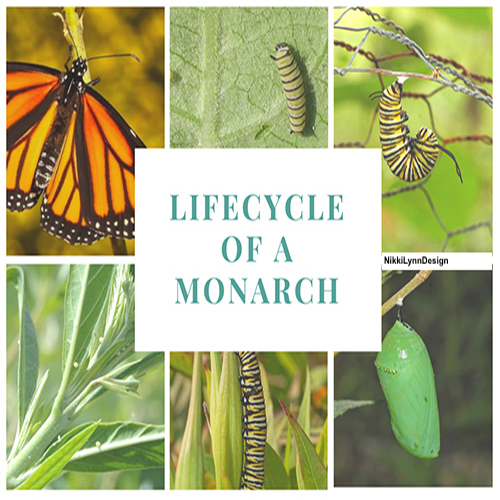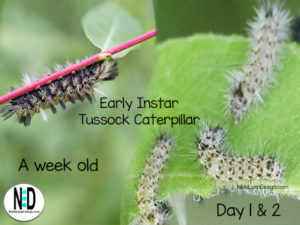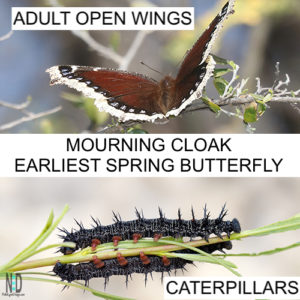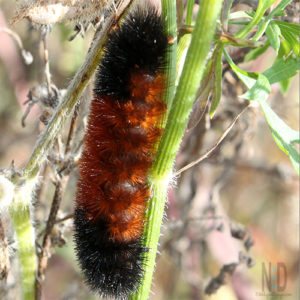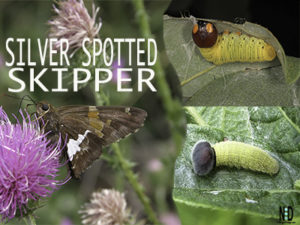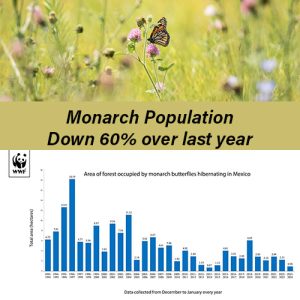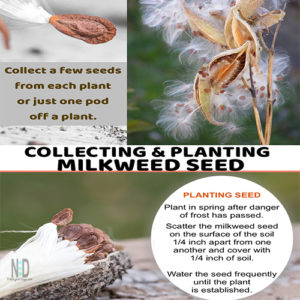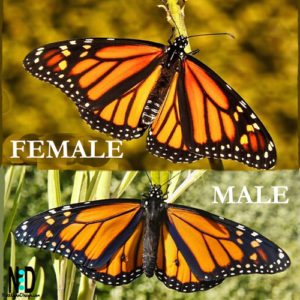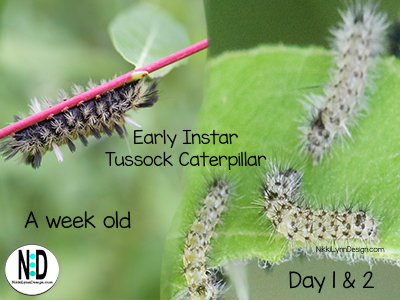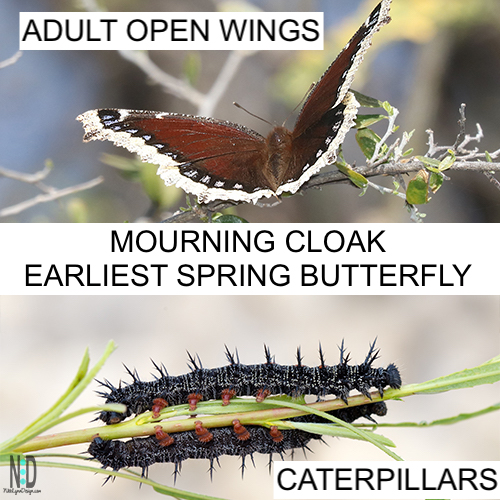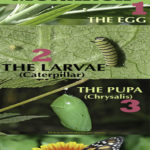Life Cycle of a Monarch Butterfly
The life cycle of the monarch butterfly is one of beauty.
Attracting Butterflies
Many gardeners plant certain flowers for their beauty and they might be hoping to attract additional wildlife to their yard.
Flowers and plants can lure your prey in for a closer look. When they find what they seek, they stay. Monarch caterpillars only eat milkweed, which can be transplanted in your gardens.
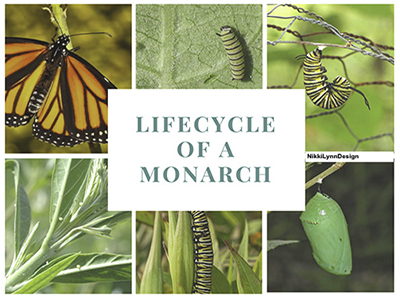
If you are lucky enough to have butterflies lay their egg on your milkweed plant you will get a first-hand look at its life cycle.
Additional Read: Collecting & Planting Milkweed For Future Generations Of Monarch
The adult monarch, butterfly eat an all liquid diet. Plant a yard full of fruit trees, flowers and provide a water source and you will surely have butterflies.

Four Stages of the Butterfly Life Cycle
Monarch butterflies go through four stages during one life cycle, and through four generations in one year. The four generations are four different butterflies going through these four stages during one given year until it is time to start over again with stage one and generation one. It’s a little confusing but keep reading and you will understand.
Generation One
1.) The Egg
STAGE ONE
January & February
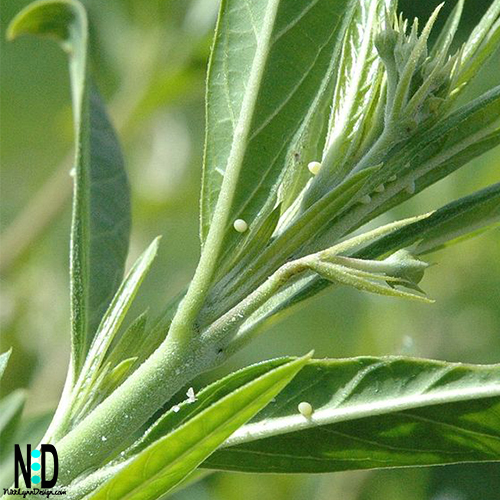
The final generation (last years) of monarch butterflies come out of hibernation to find a mate.
They then migrate north and east to find a place to lay their eggs.
March & April
The eggs are laid one by one on milkweed plants. This starts stage one and generation one of the new year for the monarch butterfly lifecycle.
2.) The Larvae (Caterpillar)
STAGE TWO
March & April
The eggs that were laid on milkweed plants hatch into baby caterpillars also called the larvae.
Video First Instar
Cover photo is of the caterpillar going from the first instar into the second. You can see the shed skin behind the caterpillar.
It takes about four days for the eggs to hatch. Then the baby caterpillar doesn’t do much more than eating the milkweed in order to grow. The caterpillars go through five instars (periods of molting) before moving to the chrysalis phase.
Fifth Instar Phase
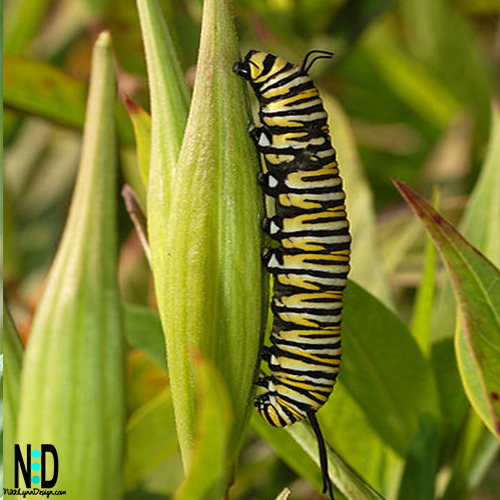
Last period of growth before completing chrysalis.
Additional Reads:
A Caterpillar On Milkweed That Isn’t a Monarch
Planting Milkweed
Feeding & Attracting Butterflies
3.) The Pupa (Chrysalis)
STAGE THREE
After about two weeks, the caterpillar will be fully grown and find a place to attach itself so that it can start the process of metamorphosis.
Video Caterpillar In J Form
It will attach itself to a stem or a leaf using silk and transform into a chrysalis
Green Chrysalis
The chrysalis remains a green coloring until approximately the last 24 hours, where it will turn black.
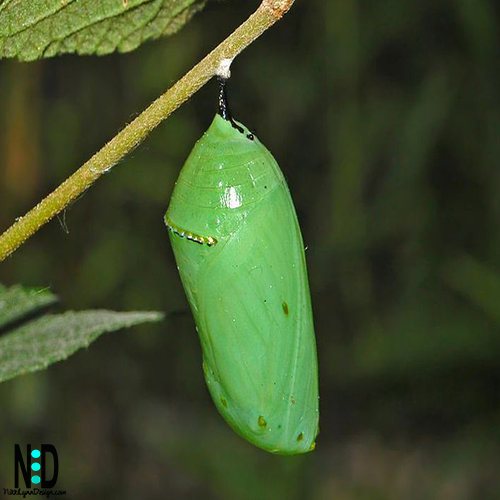
Black Chrysalis
After turning black, you know the monarch butterfly will emerge soon, so you can start to keep an eye on it.
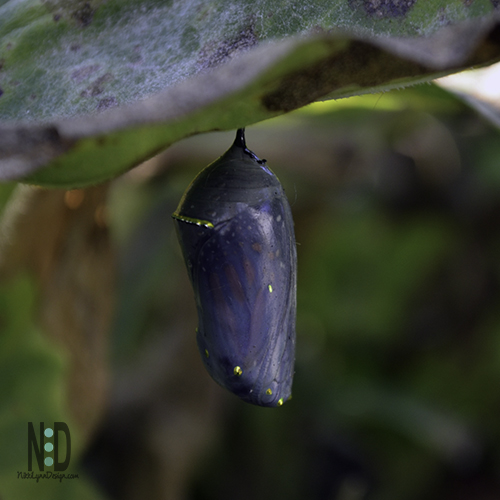
4.) The Adult Butterfly
STAGE FOUR
The monarch butterfly will emerge from the pupa and fly away after its wings are dry, feeding on flowers and just enjoying the short life it has left, which is only about two to six weeks.

This first-generation monarch butterfly will then die after laying eggs for generation number two on milkweed plant.
Raise Your Own Monarchs
Release your butterflies when daytime temperatures are at least 55 degrees Fahrenheit. Butterflies need this warmth to fly, feed, mate, and pollinate.
Generation Number Two
May and June
The second generation of monarch butterflies is born in May and June.
This butterfly will go through the same steps above, except it doesn’t have to migrate. Its entire life will be spent in the same area.
You can tell the male monarch butterfly from the female by the two black spots on his hind wings and the thinner black webbing within the wings.
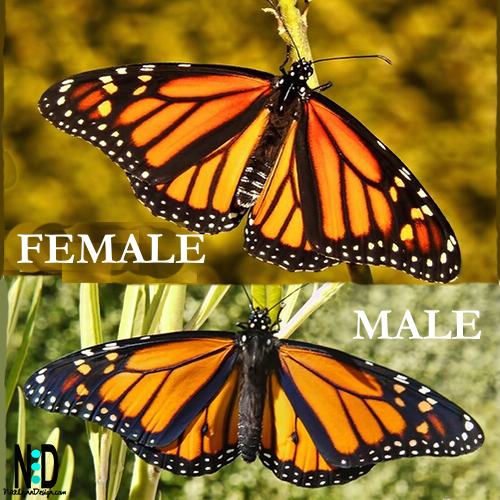
The female’s webbing is thicker and she has no identifying bottom wing spots.
Being able to tell which is a female will help you follow her to see where she will be laying her eggs.
Grow Milkweed
Generation Number Three
July and August
Then the third generation will be born in July and August. These monarch butterflies will go through the same four-stage life cycle as the first and second generations did, dying two to six weeks after they become beautiful monarch butterflies.
Generation Number Four
September and October
The fourth generation of monarch butterflies is a little bit different than the first three generations. The fourth generation is born in September and October and goes through the same process as the first, second, and third generations except for one part.

The fourth generation of monarch butterflies does not die after two to six weeks. Instead, this generation of monarch butterflies migrates to warmer climates like Mexico and California and will live for six to eight months until it is time to start the mating process after hibernation. (See Stage 1 February and March above to start again).
Monarch Roosting Video
It is amazing how the four generations of monarch butterflies work out so that the monarch population can continue to live on throughout the years, but not become overpopulated. Mother Nature sure has some cool ways of doing things, doesn’t she?
Additional Reads:
Wisconsins Monarch Migration
The Milkweed Bug
Milkweed of Wisconsin
Woodpeckers of Wisconsin
AFFILIATE POLICY: Posts on this site may contain links to outside vendors that pay me a commission when you purchase from them, at no additional cost to you. Thank you for supporting this site!
